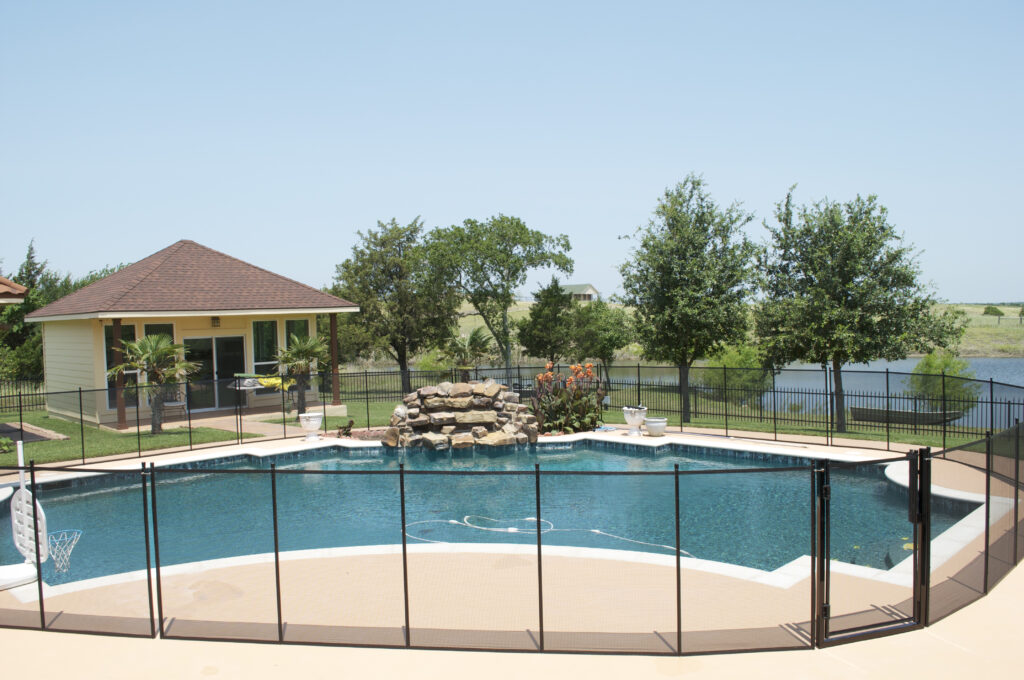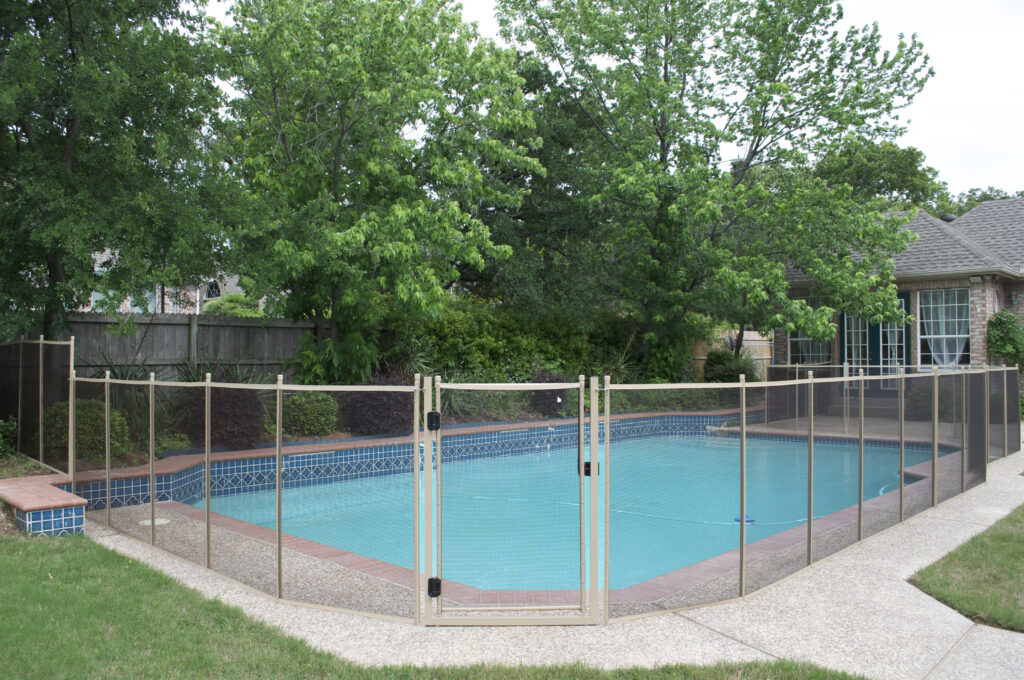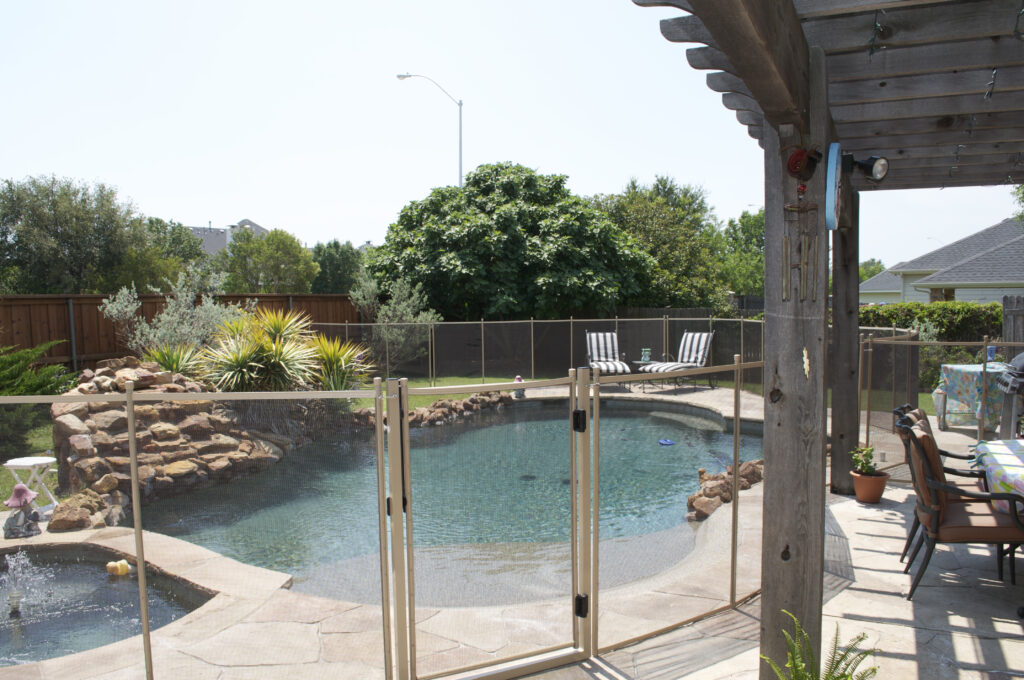With sunshine nearly year-round and coastal air constantly in the mix, your outdoor features endure more exposure than in most cities. And while most homeowners focus on pool care itself, your mesh pool fence quietly takes on salt, UV rays, sand, and shifting weather patterns, often without getting the attention it deserves.
These fences are popular for good reason: they’re safe for kids and pets, easy to remove, and more breathable than solid barriers. But to keep them functioning properly, they need seasonal maintenance tailored to San Diego’s unique climate.
Whether your fence is brand new or a few seasons old, proper mesh pool fence maintenance in San Diego will help extend its life, keep your backyard safe, and protect your investment.

Let’s break down how to care for your mesh pool fence season by season, starting with spring and working through San Diego’s unique year-round climate.
After months of cooler air and occasional rain, it’s time to give your mesh pool fence a close look. Salt in the air and winter moisture can take a toll on both the mesh and the metal components.
Start by gently rinsing the mesh with a garden hose to remove dust, mildew, and salt deposits. If your fence was stored during winter, unroll it and inspect the fabric for any signs of mold or discoloration. A simple mix of mild dish soap and water is usually enough to remove buildup. Avoid bleach or pressure washers as they may weaken the mesh.
Take a few extra minutes to inspect poles, sleeves, and gate hardware. Look for rust around screws or latches, especially if your pool is near the coast. San Diego’s salty air can accelerate corrosion even in stainless steel, so tighten loose fittings and consider replacing any visibly rusted parts.
Finally, make sure your gate is self-closing and self-latching. A small misalignment now could become a major safety issue when summer rolls around.
Summer in San Diego means long sunny days, heavy pool use, plenty of sunscreen, and a pool fence that gets exposed to all of it. UV rays can fade mesh, while chlorine and sunscreen residues cling to the fabric and accelerate wear. Without maintenance, these factors start to dull the look of your fence and wear it out faster than you’d expect.
One of the simplest ways to protect your mesh fence is to rinse it down weekly. Hose off salt spray, chemicals, and grime before they settle into the material. If your mesh is more than a couple of years old, apply a UV fabric protectant to extend the pool fence’s lifespan and keep it looking vibrant for the entire season.
Pay attention to post stability, too. High temperatures can cause soil to expand and contract, making posts shift or lean. Take a slow walk around the fence perimeter and give each pole a gentle nudge. If it wobbles, you may need to reset the sleeve or adjust the footing.

While fall may not bring dramatic weather changes in San Diego, this season quietly introduces challenges that can wear down your mesh pool fence if left unchecked.
Start by clearing out any debris built up around the base of the fence, particularly near the post sleeves. Sand and organic material hold moisture and can lead to rust if ignored. Hose off both the mesh and the hardware again, and use a soft brush if you spot any sticky residue.
Now’s also a great time to inspect for hardware fatigue after a long summer of use. Kids running through gates, pool parties, and heat expansion may have caused wear and tear. Check all screws and hinges, especially on self-latching gates, and replace anything that’s starting to show rust.
Winter in San Diego might not bring snow or freezing temperatures, but it does bring increased humidity, cool coastal fog, and the occasional downpour.
If you choose to remove your mesh pool fence during the winter, make sure it’s 100% dry before rolling it up. Even a slightly damp fence can develop mildew or rot when stored. Use wall-mounted storage hooks or elevated brackets to keep the rolled mesh off the ground and away from pests or moisture.
If you leave your fence in place year-round, give it a gentle rinse after rainstorms to clear off salt and organic debris. Pooled water, especially in areas with poor drainage, can lead to corrosion at the base of poles and sleeves.
Even with great maintenance, there comes a point when it’s smarter—and safer—to repair or upgrade your fence.
Watch for these signs:
When in doubt, it’s best to consult a local pool fence professional in San Diego who can assess your setup and provide the best recommendation based on your property and climate.

By following seasonal mesh pool fence maintenance in San Diego, you’ll catch small issues before they turn into big ones. From spring cleaning and UV protection in the summer to salt-proofing in the fall and smart storage in winter, these simple steps can make a big difference in how long your fence lasts and how well it performs.
Don’t wait until something breaks. Walk your fence line today, take note of anything that needs attention, and handle it now, before the next season arrives.
Please fill out the form below with your information. Your local dealer will be notified about your inquiry.
Please fill out the form below with your information. Your local dealer will be notified about your inquiry.